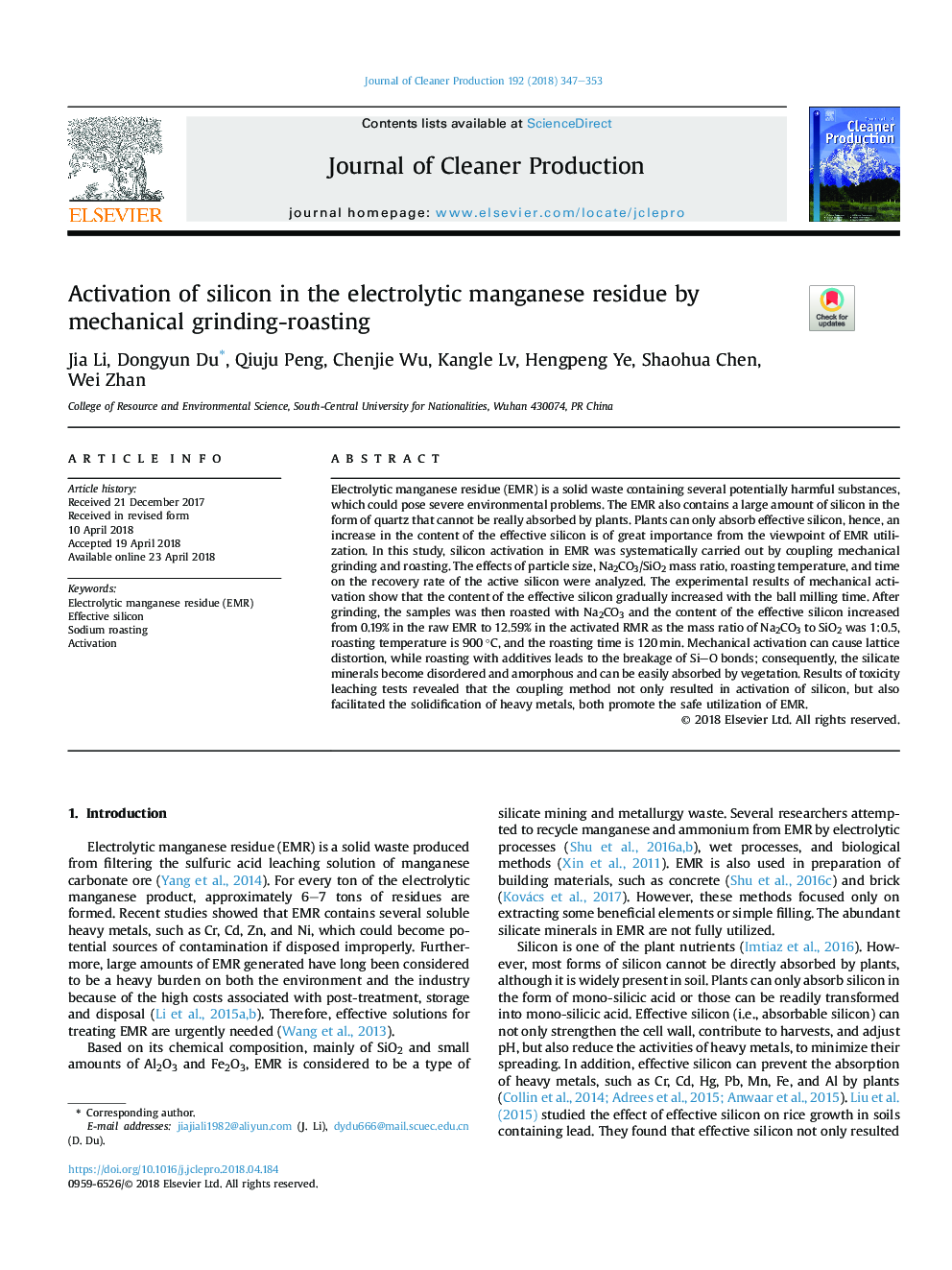| Article ID | Journal | Published Year | Pages | File Type |
|---|---|---|---|---|
| 8094554 | Journal of Cleaner Production | 2018 | 7 Pages |
Abstract
Electrolytic manganese residue (EMR) is a solid waste containing several potentially harmful substances, which could pose severe environmental problems. The EMR also contains a large amount of silicon in the form of quartz that cannot be really absorbed by plants. Plants can only absorb effective silicon, hence, an increase in the content of the effective silicon is of great importance from the viewpoint of EMR utilization. In this study, silicon activation in EMR was systematically carried out by coupling mechanical grinding and roasting. The effects of particle size, Na2CO3/SiO2 mass ratio, roasting temperature, and time on the recovery rate of the active silicon were analyzed. The experimental results of mechanical activation show that the content of the effective silicon gradually increased with the ball milling time. After grinding, the samples was then roasted with Na2CO3 and the content of the effective silicon increased from 0.19% in the raw EMR to 12.59% in the activated RMR as the mass ratio of Na2CO3 to SiO2 was 1:0.5, roasting temperature is 900â¯Â°C, and the roasting time is 120â¯min. Mechanical activation can cause lattice distortion, while roasting with additives leads to the breakage of SiO bonds; consequently, the silicate minerals become disordered and amorphous and can be easily absorbed by vegetation. Results of toxicity leaching tests revealed that the coupling method not only resulted in activation of silicon, but also facilitated the solidification of heavy metals, both promote the safe utilization of EMR.
Keywords
Related Topics
Physical Sciences and Engineering
Energy
Renewable Energy, Sustainability and the Environment
Authors
Jia Li, Dongyun Du, Qiuju Peng, Chenjie Wu, Kangle Lv, Hengpeng Ye, Shaohua Chen, Wei Zhan,
